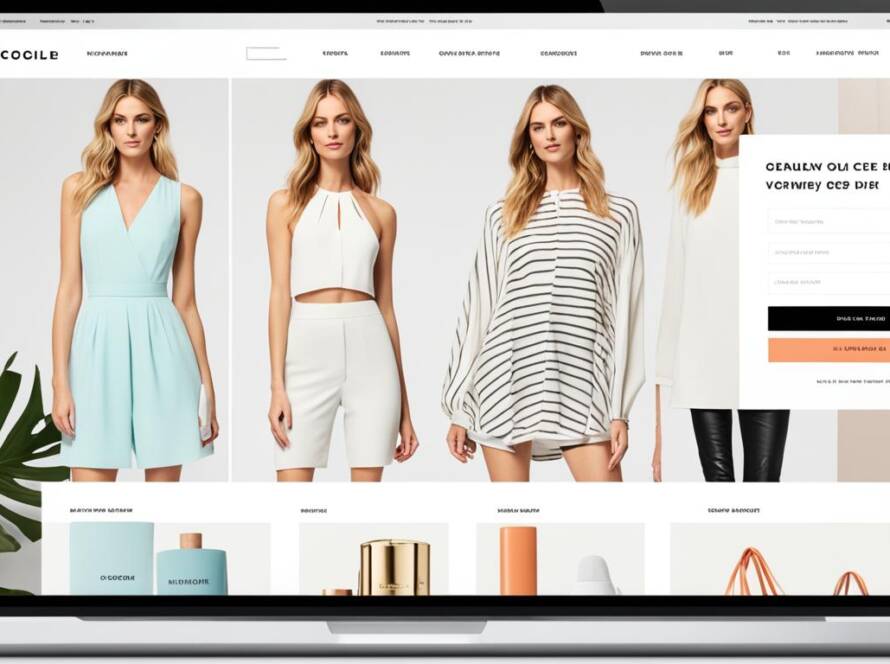In today’s digital world, digital ad formats are key for publishers to make money. They offer many ways to show ads in an interesting way. The online world in 2023 has changed a lot, with different ad formats for mobile and desktop use. Digital ads spend more than $695 billion a year, showing how big it is in global marketing. Companies like Web Ai Engine use smart technology to make websites more interactive and show ads that match what users like. It’s important for businesses to know about different ads, like display and native ads, and how they work online1.

Key Takeaways
- Programmatic advertising offers a range of ad formats for brands to choose from2.
- Advertisers can target audiences based on criteria like demographics, interests, and location through programmatic advertising2.
- The right ad format is crucial for ad campaign performance2.
- An effective digital marketing strategy encompasses various ad formats to enhance audience engagement and campaign success2.
- In 2022, IAB Tech Lab updated the Digital In-Stream Video and CTV Ad Formats guidelines to align with the growth of Connected Television (CTV) in the video ad landscape3.
Understanding Different Digital Ad Formats
In the fast-changing world of digital ads, knowing the different formats is key to connecting with your audience. This section looks at three main types: Display Advertising, Native Advertising, and Video Advertising.
Display Advertising
Display Ads are a core part of digital ads, offering an easy and cost-effective way to reach people. They show up in various forms like banners and rich media ads4. These ads are flexible, allowing for creative types like sticky ads, which can increase a publisher’s ad earnings4.
Native Advertising
Native Ads blend into the content they’re shown with, making the experience less intrusive. They work well in social media and search results, leading to more engagement5. With more people using mobile devices, these ads are often seen as mobile ads on platforms like Facebook and Instagram, reaching more people6.
Video Advertising
As internet speeds and mobile screens get better, Video Ads are becoming more popular. They usually get more clicks than other ads4. There are two main types: Instream and Outstream ads. Instream ads are placed in videos on sites like YouTube, paid by view or CPM4. Outstream ads don’t need a video player and pay when viewed for two seconds, offering a less intrusive experience4.
Facebook users watch almost 3 billion hours of video daily, making mobile ads crucial on such platforms6.
Advantages and Challenges of Digital Ad Formats
Digital ads bring many benefits, like precise targeting in advertising. They can reach people across various online platforms better than old ads. For example, Google AdWords in the early 2000s changed how we target ads7. Also, 65% of searches for products lead to paid ads, showing their power8.
Programmatic Advertising has also changed the game. It uses algorithms to buy ad space automatically7. This makes marketing cheaper and smarter. Plus, 92% of marketers say retargeting ads work as well as or better than other types8.
But, digital ads also face challenges. Issues like low click-through rates and ad blockers are big problems. For instance, 27% of people look for a business after seeing its ad8. But, with so many ads online, it’s easy to miss them.
Despite these issues, digital ads offer unmatched flexibility and global reach. They let businesses engage with customers in new ways. Video ads, for example, have become more popular as more people watch videos online. In fact, 88% of people have bought something after watching a brand’s video8.
Overall, digital ads have their ups and downs. But, they offer clear insights into how campaigns perform, cost-effective strategies, and better customer engagement. The global ad industry is expected to grow to $786.2 billion by 2026, showing the huge potential in digital ads9.
Conclusion
Digital ads play a key role in online marketing strategies. They come in many forms like display, native, video, and email ads. This variety lets businesses tailor their ads to reach different people and boost their online presence.
Display ads come in sizes like leaderboards and skyscrapers, offering targeted options. However, they face issues with ad blockers10. Video ads, on the other hand, offer engaging content in various formats, meeting different tastes10.
Using Web AI Engine technologies is crucial for digital ad success. These tools help advertisers target the right audience effectively. With programmatic platforms and data insights, ads can reach people at the best times. This is vital as mobile ads make up over 60% of digital ad spending and are set to hit $400 billion by 202411.
Understanding the strengths and challenges of each ad type is essential. Native ads fit well with content, creating a smooth experience and improving brand trust10. Programmatic DOOH is also growing fast, increasing by 94% from 2020 to 202112. A smart ad strategy makes digital ads key to future marketing, offering new ways to engage with audiences and track results.
Source Links
- https://www.linkedin.com/advice/3/what-most-effective-ad-formats-each-stage-digital-hd58f
- https://www.eskimi.com/blog/programmatic-ad-formats
- https://iabeurope.eu/knowledge_hub/iab-guidelines-technical-standards-for-digital-advertising-formats/
- https://setupad.com/blog/digital-ad-formats/
- https://smartyads.com/blog/digital-ad-formats
- https://digivizer.com/blog/social-media-ad-formats-complete-guide-with-examples/
- https://www.geeksforgeeks.org/digital-advertising-meaning-working-types-and-challenges/
- https://www.wordstream.com/blog/ws/2023/02/24/digital-advertising
- https://www.creatopy.com/blog/online-advertising/
- https://wpadvancedads.com/ad-formats/
- https://www.optidigital.com/en/blog/best-trends-for-ad-formats-2024/
- https://collingmedia.com/digital-media/emerging-digital-formats-in-advertising/



